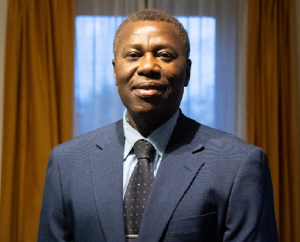Ghana’s growth rate projection of 6.1 percent for 2017 places it at the 5th position and at par with Burkina Faso in Sub Saharan Africa (SSA), a World Bank report has revealed.
According to the latest Global Economic Prospects Report by the Breton Woods institution, Ethiopia is expected to grow very highly in Sub Saharan Africa with an impressive Gross Domestic Product (GDP) of 8.3 per cent this year followed by Tanzania with a growth rate of 7.2 per cent.
Ivory Coast and Senegal placed 3rd and 4th with an expected GDP of 6.8 and 6.7 percent respectively. Africa’s biggest economy, Nigeria is however expected to grow at 1.2 percent, migrating from recession.
According to the report, Ghana is also expected to grow at a high 7.8 percent in 2018 and 6.2 percent in 2019.
“Growth is expected to strengthen in Ghana as increased oil and gas production boosts exports and domestic electricity production”, the report explained.
Many research outfits including BMI, research arm of Fitch Ratings have projected growth rates of between 6.2 and 6.5 percent for Ghana this year.
The World Bank report noted growth in Sub-Saharan Africa is forecast to pick up to 2.6 percent in 2017 and to 3.2 percent in 2018, predicated on moderately rising commodity prices and reforms to tackle macroeconomic imbalances.
However, per capita output is projected to shrink by 0.1 percent in 2017 and to increase to a modest 0.7 percent growth pace over 2018-19. At those rates, growth will be insufficient to achieve poverty reduction goals in the region, particularly if constraints to more vigorous growth persist.
Risks
The regional outlook is subject to significant external risks, the report stated.
“A sharp increase in global interest rates could discourage sovereign bond issuance, which has become a key financing strategy for governments in recent years, as they have increasingly looked to global markets for the funds to finance domestic investment”.
If sustained it added, “Increases in global interest rates could further reduce the ability of governments in the region to access foreign bond markets.
In addition, weaker-than-expected growth in advanced economies or in large emerging markets could reduce demand for exports, depress commodity prices, and curtail foreign direct investment in mining and infrastructure in the region.”
Meanwhile, the world economy will pick up speed this year and next year, helped by steadier commodity prices and a pickup in global trade. The anti-poverty agency predicts 2.7 percent growth this year and 2.9 percent in 2018, improving on 2016's 2.4 percent expansion.
The bank sees the US economy growing 2.1 percent this year, up from 1.6 percent in 2016, and the 19-country eurozone expanding 1.7 percent, down a notch from 1.8 percent. Japan is expected to grow 1.5 percent, fastest pace since 2013 and up from 1 percent last year.
China's deceleration will continue - from 6.7 percent growth last year to 6.5 percent in 2017 to 6.3 percent in 2018 - as the country moves away from unsustainable growth fueled by often-wasteful investment and toward slower, steadier growth based on consumer spending.
The bank's outlook for global growth was unchanged from a forecast it published January - a surprising bit of good new. World trade is expected to grow 4 percent in 2017, the fastest in three years.
Business News of Thursday, 8 June 2017
Source: thefinderonline.com













